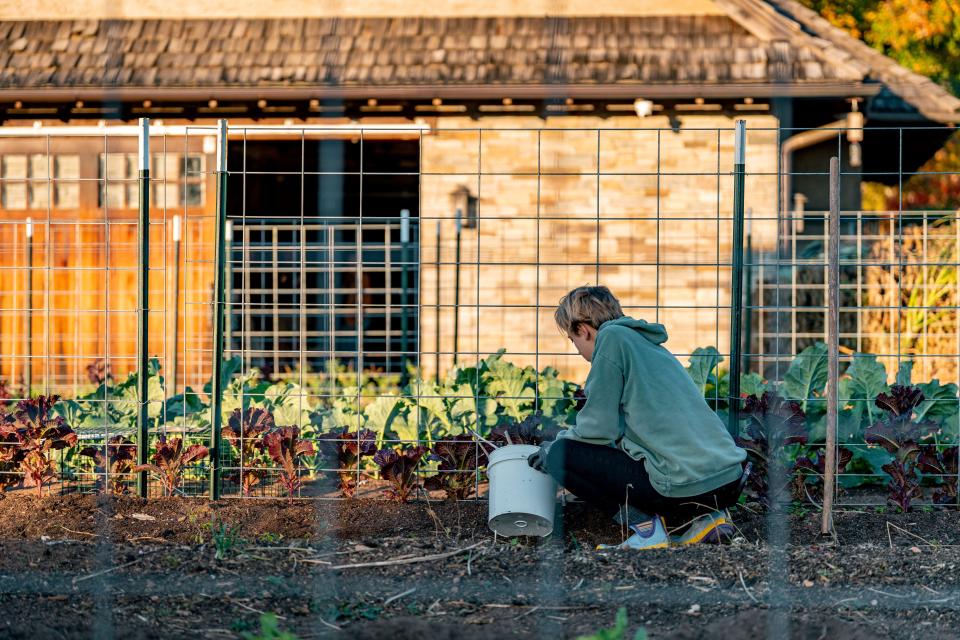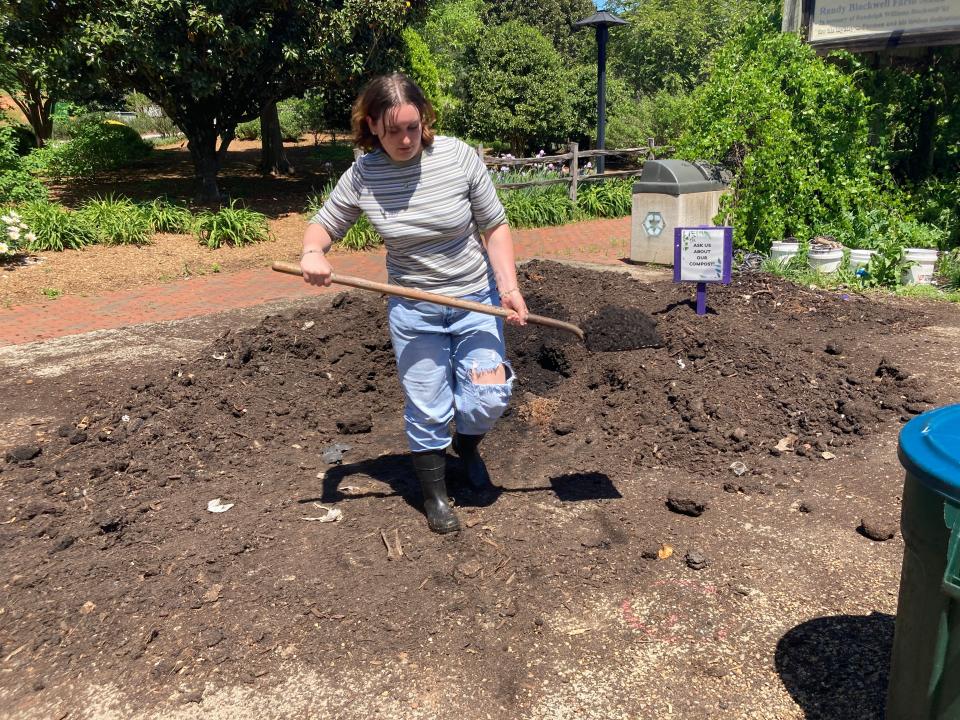Welcome to Sustainability with Sarah! I’m the climate change and environmental reporter for The Greenville News covering issues and solutions across the Upstate. In this weekly column, I will answer your questions about what’s going on in the natural world around us, from waste to water and everything in between. We’ll look at what works, what doesn’t and what you want to see.
Have you ever thrown away food and wished you could find another destination for it besides your local landfill?
Well, good news! Composting could help you find new life for your old food. It’s the process of breaking down organic waste like leaves and fruit to make a natural fertilizer. This week, we’re talking about building your own compost pile.
Do you have a question you’d like answered? Feel free to fill out our Google form here or send me an email at sswetlik@gannett.com.

Question: How can I start my own compost pile?
Answer: Start by finding a composting class near you or online to learn more about how to break down your waste correctly. Then, combine items like leaves and food waste and monitor over time while microorganisms break it all down and convert it to fertilizer.
Composting is reusing food and yard waste to create a type of all-natural fertilizer, said Furman University Farm Manager Bruce Adams.
It works like a recipe. To compost, you’ll combine four elements: Carbon, nitrogen, water and air.
Carbon sources can come from your yard, like sticks, leaves and grass. Nitrogen sources come from food, like produce trimmings or rotting fruits and vegetables from a garden.
The key to compost is creating a habitat for microbes, or tiny life forms that eat away at the compost mixture and help break it down to its finished product. Microbes are typically too small to be seen without a microscope. One example of a microbe is bacteria.
Composting isn’t a speedy process. Adams said it typically takes 30-60 days for a backyard compost pile to be ready to use.
The end product looks similar to soil. It can be used in a garden, or for plants or shrubs.
“When you compost, it’s all natural. And it’s good for anywhere from kids to pregnant moms to people with cancer, because it’s the way nature intended from the beginning,” Adams said.
I want to start composting. What do I do first?
First, you’ll want to take stock of how much room you have. Adams recommends taking a composting class to get hands-on experience. You should see, feel and smell the mixture so you know you’re composting correctly, he said.
Adams teaches classes at Furman, but you can also look for classes online if there aren’t any in your area, like the Virtual Master Composter Course from Michigan State University.
You also can research if any programs around you accept food waste for compost, however, Adams said there is a gap in composting resources for people in the Upstate who don’t have space for a full compost pile at home.
“That’s showing the need for Upstate South Carolina – in the Greenville area, and then just the Piedmont as a whole, to be stronger with the whole composting outfit. We’re weak in that area. There’s just not a lot of options,” Adams said.
In Greenville County, the Twin Chimneys landfill team is working to establish a composting program that could allow residents to drop off their food waste to be added to a compost pile. In the Upstate, few programs exist for people who want to use their food waste for compost but don’t have the space for their own pile.


If you do have the space to compost at home, here’s what Adams recommends:
-
Start with a flat three-by-four-foot area for your pile. You’ll leave it in open air while the microbes get to work. Sun is better than shade, but it doesn’t mean your compost pile won’t work if it’s in a shadier spot.
-
Add all the ingredients to your pile at once – don’t add as you go.
-
You’ll want to follow a specific recipe so your compost is breaking down correctly. Adams recommends about 20 times more carbon (he said backyard composters should try to use leaves) than nitrogen (your food waste).
-
Use produce trimmings and garden leftovers for your food waste. Never include meat, dairy or any kind of bone in your pile.
-
Using a half cup of brown sugar or a packet of yeast when you start your pile will help create a healthy habitat for microbes.
-
You’ll want to keep your compost moist, but not wet.
Once you’ve got your ingredients together, you’ll mix it around about once a week, Adams said. Over time, your pile will start to shrink as the microbes break it down. Once your pile no longer looks like the food and debris you started with and looks more like dirt, it’s ready.
South Carolina’s Department of Health and Environmental Control also offers a backyard composting guide on their website.


If you don’t have the space to start your own pile, there are other options. For Greenville locals, Adams said you can put produce trimmings in a Ziploc bag, keep it in the freezer to avoid smelling, and bring it to Furman to add to the compost there.
To learn more about composting in South Carolina, visit DHEC’s website.
Sarah Swetlik covers climate change and environmental issues in South Carolina’s Upstate for The Greenville News. Reach her at sswetlik@gannett.com or on X at @sarahgswetlik.
This article originally appeared on Greenville News: Sustainability with Sarah: Here’s how to start composting at home
